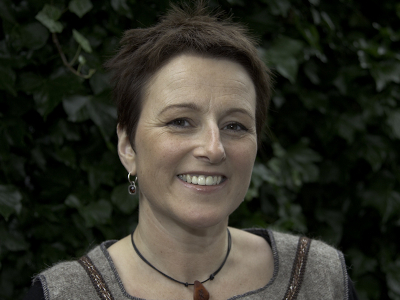Bio
Vilborg Davíðsdóttir was born on the 3rd of September, 1965 in Þingeyri. She graduated from the Ísafjörður high-school in 1984 and studied English at the University of Iceland for two terms, 1985-1986. She completed a degree in Journalism and Mass Communication at the University of Iceland in 1991, and graduated with a Master in folkloristics in 2011. Vilborg worked as a journalist, reporter and producer in various media from 1985 to 2000. She has since dedicated herself to writing with a focus on historical novels.
Vilborg's first novel, Við Urðarbrunn, was published in 1993 and a sequel, Nornadómur, in 1994. Við Urðarbrunn was awarded by the Icelandic department of IBBY (International Board on Books for Young People) in 1994, and a year later, the sequel, Nornadómur, received the Reykjavík Children's Literature Prize. In 2001 the books were published in a single volume entitled Korku saga. Both novels have enjoyed a considerable popularity among teenagers and have been read in elementary- and secondary schools.
Vilborg has since sent forward numerous historical novels. Among them is the trilogy about Auður djúpúðga (Auður the Deep-Minded), and the times of the Viking invasions and settlement in the ninth century, the first of which was nominated for the Icelandic Literature Prize in 2009. Vilborg's novel Hrafninn (The Raven) was nominated for the same award in 2005. The story touches on the mysterious disappearance of the settlements started in Greenland by Icelandic settlers around the year 1000.
Works by Vilborg Davíðsdóttir have been translated into other languages.
Photo of author: Jóhann Páll Valdimarsson.
From the Author
From Vilborg Davíðsdóttir
Why do I write? What a strange question. Why doesn’t everyone write, you should ask instead. Can you imagine a better way of making a living than telling stories? I love stories, I always have. How could you not? Words are exciting, you can expect anything from them. You can do so many things with them, turn that which is upside down around, in order to make it understandable, figure out what was hidden in the dark. Make ideas that drift in the air real, grab them and make a whole new world, line up people and put them up against one another, place them in situations that seem almost hopeless – study how they react, try them out to the fullest. Put oneself to the test. How would I react if ….? What would you do if …? All those ifs that become the catalyst of ideas and perhaps start them on a journey that only you know how ends.
Some ideas however do not drift at all. They come at you like birds during nesting season. Gather up at your bedside when you are just about to fall asleep, demand to be, to be made visible … “Look at me,” they whisper aggressively. “Look how good I am and how special, look how profound I am! Write me down instantly, otherwise I may slip away from you.”
At first, you only see the bright side of the idea. The exciting one, the one filled with possibilities and promises that anything can happen. It isn’t until you are well on your way and have weaved the idea into your life, that you understand she was the one who chose you, and now it is your job to undo the tangle. Too late to return, and you who were like God Almighty fully in charge are just the tiniest instrument in a world where not at all anything can happen, but only that which fits what came before. Your role is to deliver it all as it was, or at least as close to what you think it was as possible. As it must have been.
The world of the story is real. And when I say that, I mean the world of History. The world of the people who lived before we who are here now came along – it happened and it does exist – as long as we think about it and about those who created it: The men and the women, the old people and the children. We cannot forget them. For if we did, for what did they suffer, toil, rejoice and grief?
If we keep our eyes open we can envision these people here and there, we can catch a glimps of them in the material world and get an idea about all of that which cannot be seen but is still there, veiled by the fog of time, somewhere in the vast sphere of history. We can see them for an instant in a broken blue porcelaine coffee-cup in a stream, hardly visible behind a wild bed of angelica at a deserted farm in Hornstrandir; in an old wooden doll without arms, buried deep in the clay at Stóra-Borg; in a christening font made of stone at the church ruins at Herjólfsnes in Greenland; in the story in Landnáma of the woman who would rather hang herself than be married against her will; in a copy of a 500 year old summon from a bishop to a priest who kidnapped a woman and her young son and locked them inside a cold den.
Stories everywhere. In the green eyes of the lover. In the sorrow of those who have lost and are afraid they may be to blame. In the man’s third and fourth toes that are stuck together, indicating he may be a merman after all. In an old teddy bear, loved so badly that it is left with no ears and only one eye. In the worn letters on the gravestone of the merchant and beloved husband with the Danish surname in the old cemetary by Suðurgata. In the polished and faded piece of glass on the shore at Grótta … a piece from the neck of the brown medicine bottle someone put up to his lips a long time ago, hoping this elixir from the Danish merchant would ease the stomach-pain he had been suffering from ever since the spring when he built the coffin and carried in it the stillborn baby, his and his wife’s first child. A tear runs down his weatherbeaten and ruptured cheek, falling down on the bottle in his hand, and from the brownish glass into my outstreched hand. Salty, like the wave that carried it through the sea of stories towards me – and towards you.
Vilborg Davíðsdóttir, 2002.
Translated by Kristín Viðarsdóttir.
About the Author
Historical women – Vilborg Davíðsdóttir
Historical fiction has always been popular among Icelanders. Through fiction, history is given an accessible form, and instead of dry and monotone recitals of facts and years, a whole world is created, with characters, dialogues, love and fate. Historical fiction is of course not all of the same kind, but one can trace three main tendencies. One method is simply writing a new story, thus using history as a kind of stage for a history of one’s own. The outcome is then a kind of an alternative history, or a parallel history. This type of historical fiction is not considered to amount to much, it is mostly practiced in popular fiction and often referred to as fantasy. Another way is to use history as a matrix, filling it up with homemade fiction, possibly even moving historical facts around a little to serve the story. This type is the most common type of historical fiction and can be seen in both high literature and popular culture; in fact this kind of a fiddling with history is highly popular in historical cinema these days and does not please all. The third type is to keep close to the historical data, letting the facts lead the way. The problem with this method is that the historical facts and the data can overwhelm the fiction, the story thus becoming too sluggish and arduous.
Vilborg Davíðsdóttir’s novels are of the second type, she refers to historical events while creating her own story around them. Vilborg has dedicated herself to historical popular fiction, and even though she has only written four books to date, she has already managed to mark her place within this tradition.
Popular fiction has always had a difficult position within Icelandic literary discourse. While numerous translations of popular fiction of all kinds are continually being published, this kind of reading material receives very limited coverage, even though the books sell well. Icelandic authors, who have been writing popular fiction, have complained about their work not being taken seriously - as popular fiction - and due to the lack of attention from the literati this important part of literature has not managed to mature properly. It is, for example, common to assume that popular fiction is suitable for adolescents rather than being something that appeals to adults. This tendency is sometimes so strong that translations of popular fiction are marketed for teenagers and children even though the original work was intended for adults.
Vilborg Davíðsdóttir’s first two books, Við Urðarbrunn (By the Well of Urður; 1993) and Nornadómur (The Witch’s Trial; 1994) were published as books for teenagers and have been a popular teaching material in schools ever since they came out. It is, however, difficult to see any real difference between these novels and the stories of many of the writers who have written in the style of adult historical popular fiction. In 2001 the two novels were published in one book as Korku saga (The Saga of Korka). Korka is the heroine of the books and the stories describe her life and fate. She is the daughter of an Irish slave and an Icelandic settler. Korka herself is a slave in her father’s house and she quickly shows that she is no ordinary girl. Her grandmother takes her under her wing and teaches her about the Norse religion and magic, and Korka proves an apt pupil. When Korka kills a man who rapes her, she has to escape to Denmark where she becomes a key character in the battle over the kingdom and meets a man she develops a liking for. In the second book, the story of her rather knotty relationship with her young man is described, resulting in full concord - after Korka has yet again proven her special talents when it comes to fateful historical evens - and the young couple move to Iceland, where even more dramatic events await Korka’s Icelandic family.
As should be evident, these stories have everything it takes to make a good reading, a supernatural aura of magic and runes, feverish love and passion, violence, sex and power struggle. In addition to this, the stories are skilfully told and full of information concerning history and daily life. Vilborg draws up a clear picture of the period of the Vikings, their religion and traditions, competently maintaining the balance between a thrilling story and edifying information about history and period.
The books about Korka came forward during a period of considerable popularity of such tales abroad. In the nineties the Viking became rather copious within the cultural landscape and one could say that he became fashionable. Suddenly there where Vikings everywhere, in culture, film and fiction, being shown in a considerably more heroic light than often before. In Ireland there was, for example, suddenly a great revival of the Viking-heritage around the mid nineties, but it should be recalled that the mainstay of this Viking heritage involved the Vikings plundering the country and its nation, doing their best to burn what they could not sell, especially manuscripts and books. However, now the barbaric image of the Viking has receded and instead there is an image reminiscent of the romantic ideal; tall and fair, with wild hair and masculine beard, this Viking sails unafraid around the world oceans dispersing culture which he brings with him during his travels. A bit like the flowers and the bees really.
This is certainly an image which Icelanders have tried to maintain from the start, but now it has suddenly managed to migrate to other nations, to the Irish as already indicated, and then of course to the Americans. One could muse endlessly over this movement, where it comes from and how it is put together, but here I do not intend to track down these theories. Still, it is prudent to mention the influence of DeCode, the Icelandic genetics company, or more to the point, the ideology behind the research on the Icelandic genome map, which is supposed to be clean and uncorrupted by foreign influences, and thus still brimming with Viking genes. Another, more light-headed reason, could be the sudden fashion in facial hair that captured western males a few years ago, indicating a rather desperate attempt at confirming masculinity in times of an upheaval in gender roles.
While the Viking fashion has been prevalent in action films, literature has also had its share of Vikings. And in literature a distinct emphasis on women during the Viking-period can be discerned. The discussion about the Viking travels to America has been very much in evidence, complete with the dubious emphasis on the discoveries of the white man. This has made the so called Vineland-Sagas, Grænlendingasaga (The Saga of the Greenlanders) and Eiríks saga rauða (Eirik’s the Red’s Saga), very popular. The focus has not least been on Guðríður Þorbjarnardóttir, as the most widely travelled woman at the time. Here in Iceland a theatrical piece was staged about Guðríður’s travels, and Jónas Kristjánsson published the novel Veröld víð (The Open World) in 1998, a novelisation of both the Vineland-Sagas, with Guðríður as the main protagonist. This novel seemed driven by a feminist impulse, in the way it corrected the role of women in the Sagas, and Vilborg’s Korka-stories are also a part of these women’s stories. Other such foreign stories include The Greenlanders (1988), by Jane Smiley, translated into Icelandic as Grænlendingar in 1991, and Eiriksdottir by Joan Clark, from 1994. While The Greenlanders describe the decline of the white settlers in Greenland, long after the Vineland-travels, Eiriksdottir, as the title indicates, is the story of Freydís Eiríksdóttir, who is one of the many shrews of the Sagas.
All these novels are a kind of adaptations, or even translations, of the Sagas of the Icelanders, to the extent that the stories of the Sagas are being translated or adapted into the form of the modern novel. Such adaptations are always tied up in a clear hierarchy, where the original is assumed to be better than the copy, and the copy is judged on the basis on how much it adheres to the original. However, in the case of these novels such a faithfulness to the original is not really the relevant measurement, for, as already indicated, they are in a conscious way addressing and correcting an imbalance in the roles of males and females, by emphasizing the woman. Thus, history is being revised and recreated to some extent.
This revision then takes on many different forms. It is, for example, interesting to see how Jónas and Clark approach their two leading ladies. Jónas’s novel is an example of a highly traditional approach, where the ‘original’ is taken very seriously: he, for example, maintains perfectly the images appearing in the Sagas of Guðríður and Freydís, where the former is fair and beautiful and good, while the latter is a mean redheaded bitch. It is, however, this negative image of Freydís that Joan Clark tackles in her novel Eiriksdottir, the novel is built up as a kind of a biography of Freydís, with the fateful Vineland trip as the main issue.
It is interesting to note how these novels all take on the form of popular fiction, consciously or unconsciously. Partly this is tied up in the hierarchy of the original and the copy, and is thus lies in the working process, for these translations and adaptations are certainly offering a popular twist on a highbrow material. In addition, a popular formula is handy when it comes to making history and Saga accessible.
These fictions thus provide an interesting example of how “high culture” becomes “low culture”, perhaps particularly in the way that it is almost as if the popular formula takes over, forming the stories. In such cases where authors attempt to keep as close as possible to their historical sources, a conflict becomes unavoidable, and the novels have a strong tendency to become uneven and pretentious. However, the marriage of sources and fiction seems much more successful when the history is taken in moderate seriousness, particularly when it is manned by new people, as in Vilborg’s novels, whose strength lies in a convincing and unpretentious reworking of historical material.
Her novel Eldfórnin (Sacrifice of Fire) (1997) is more firmly based on historical data then the Korka-stories and takes place in the fourteenth century. Vilborg chooses her material from annals and folk tales and tells the story of a nun in Kirkjubæjarklaustur who according to annals was burned in 1343. A young girl is taken into care by the nuns but soon it becomes apparent that she tends to go her own way. As before, Vilborg creates a convincing and animated picture of people and places and spices it up with strong drama and a some terror. The style is very much in the spirit of the folk tale without being marked by trite symptoms of pastiche. As in her earlier books the women here are strong and independent and do not hesitate to be critical, breaking out of the narrow frame which they find themselves entrenched in. Vilborg is clearly critical of the Christian ideology of the period and capsizes current ideas concerning sins and gender roles. The novelist has a good grip on the material that she has, reworking it skilfully and uses familiar motifs from folk tales and legends, such as the idea of the fetch (a cross between a kind of a guardian spirit and a trickster ghost) and stories about exposed children, most of whom seem fathered by priests. Another interesting theme is the question of the said and the unsaid, and as in the former books there is a considerable difference between knowing the thing and saying it out loud. A tension of this kind is a well known literary trick in dramatic novels of this kind, but in the medieval society Vilborg describes a familiar theme takes on an added importance, for here the faith in the power of the word is an important part of daily life.
In the novel Galdur (Magic) (2000) Vilborg has moved on yet another century. Galdur is a historical romance taking place in the fifteenth century and tells the story of a young woman Ragnfríður, who becomes ‘unexpectedly’ pregnant at fifteen and thus her engagement to a young a promising man, Þorkell, is called off. They then meet again over a decade later, but now Þorkell has become a catholic priest and thus is not allowed intercourse with women. So here we have a recipe for a traditional love drama; lovers who have been separated and then meet again, eleven years or so later. The story emphasizes Ragnfríður´s position, she is of course a fallen woman, who, due to family connections, is allowed to become a housekeeper for the bishop, who is English. The historical background of this drama is the struggle between religions in Iceland at the time, where foreign bishops and Icelandic priests fought, and the novel is partly a dramatic story about these struggles for wealth, land, the role of the bishop and of course, Ragnfríður herself. As already indicated the story is entertaining, the historical background is competently done, never overwhelming the novel itself.
Within Icelandic literary discussion the interest in historical fiction has been somewhat criticised on the grounds that historical drama invites an escape from the present into the distant past. However, historical fiction often has something to say to our times in the way that it offers up an opportunity to comment on the now from the point of view of history, as well as the reader must always read the story from the point of view of her own period and reflect it in her own experience. This reflection in time works particularly well for writers like Vilborg, particularly as she chooses to write about women in a men’s world, considering the position of women and this calls automatically for reflections on the position of women today. By assuming a certain freedom in her approach to history Vilborg gives her novels a distinct modern facade, without the story becoming forced or uneven. Vilborg’s novels are far from being some historical pastiche, they are above all else entertaining narratives and gripping yarns.
© Úlfhildur Dagsdóttir, 2002.
Articles
Criticism
Neijmann, Daisy L., ed. A History of Icelandic Literature
University of Nebraska Press, 2007, p. 465, 603
Interview
Eygló Svala Arnarsdóttir : The Paragon
Iceland review 2015, 53 (3), p. 50-53
Awards
1995 - The Reykjavík Scholastic Prize: Nornadómur (The Witches’ Judgement)
1994 - The IBBY Iceland Award: Við urðarbrunn (The Well of Fates)
Nominations
2023 - The Icelandic Literature Prize: Land Næturinnar (The Land of Night)
2021 - Fjöruverðlaunin - The Women's Literature Prize: Undir Yggdrasil (Under Yggdrasil)
2016 - Fjöruverðlaunin - The Women's Literature Prize: Ástin, drekinn og dauðinn (On Love, Dragons and Dying)
2009 - The Icelandic Literature Prize: Auður
2005 - The Icelandic Literature Prize: Hrafninn (The Raven)
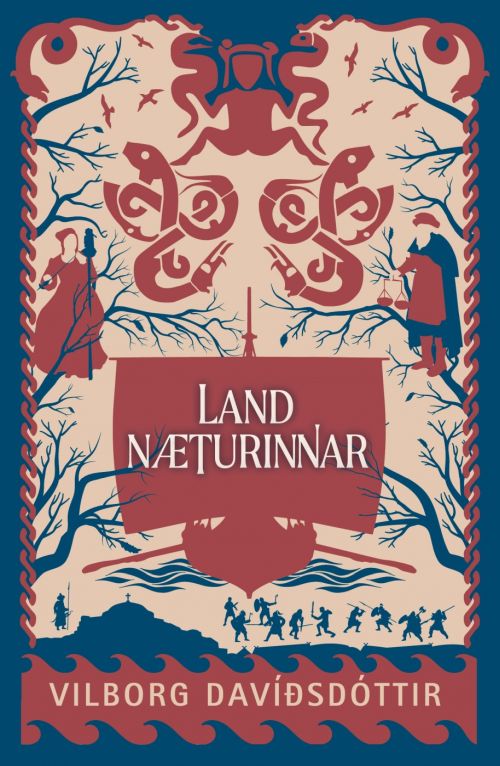
Land næturinnar (The Land of Night)
Read moreEftir harmleik heima á Íslandi heldur Þorgerður til Noregs þar sem örlögin leiða hana í faðm skinnakaupmannsins Herjólfs Eyvindarsonar frá Jamtalandi. Saman halda þau í kaupferð til Garðaríkis, á fund væringja sem sigla suður Dnépurfljót og yfir Svartahaf með ambáttir og loðfeldi á markað í Miklagarði. Í landi næturinnar bíða þeirra launráð og lífsháski. Á augabragði er Þorgerður orðin ein meðal óvina og kemst að því að stundum kostar það meira hugrekki að lifa en deyja.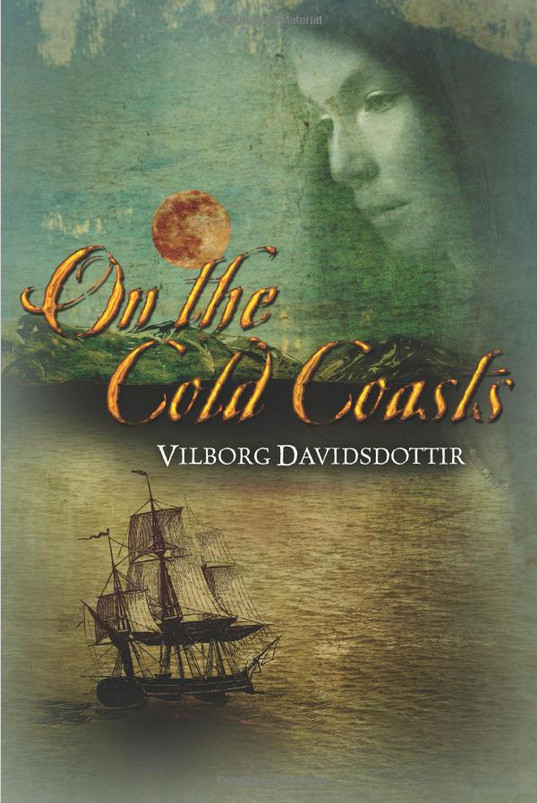
On the Cold Coasts
Read more
Vígroði (The Red Air of Battle)
Read more
Die Winterfrau
Read more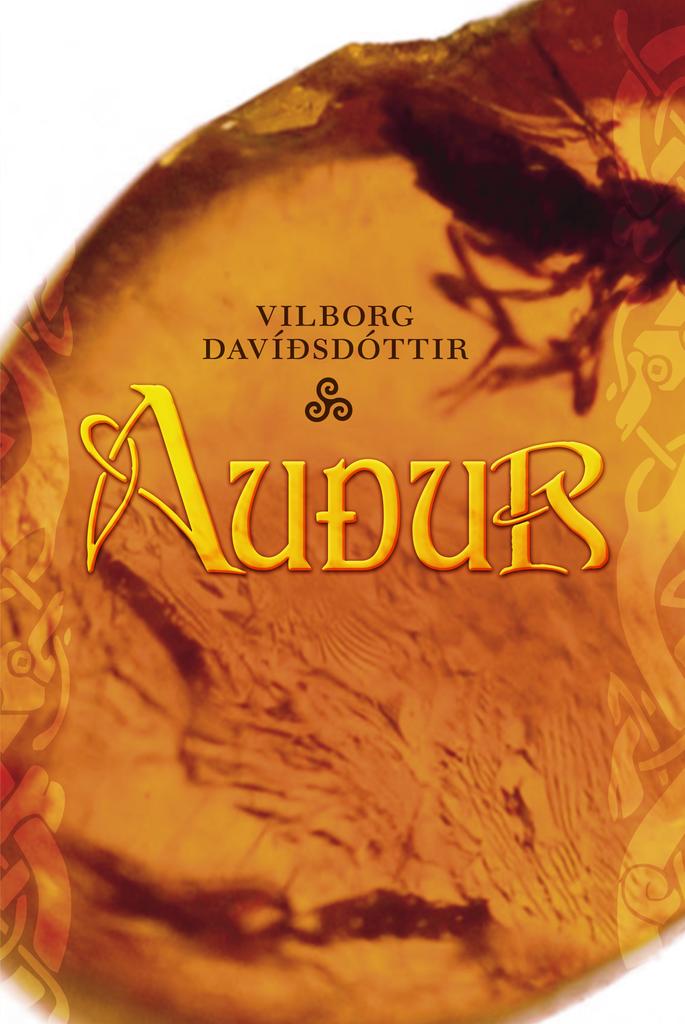
Auður
Read moreAuður
Read more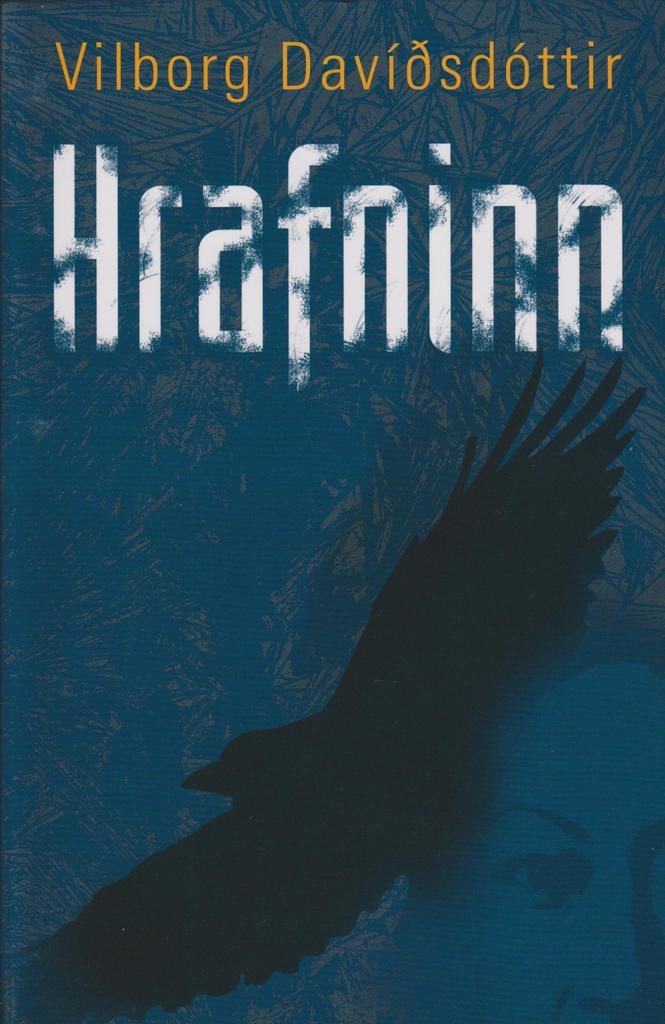
Hrafninn (The Raven)
Read more
Der Liebeszauber
Read more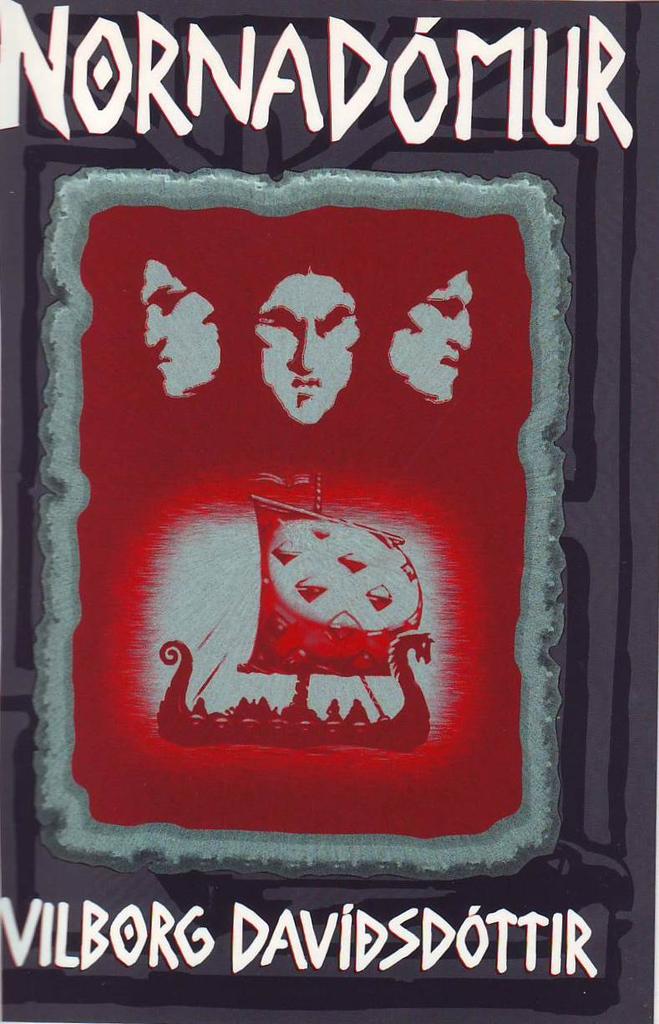
Nornadómur (Which court)
Read more
